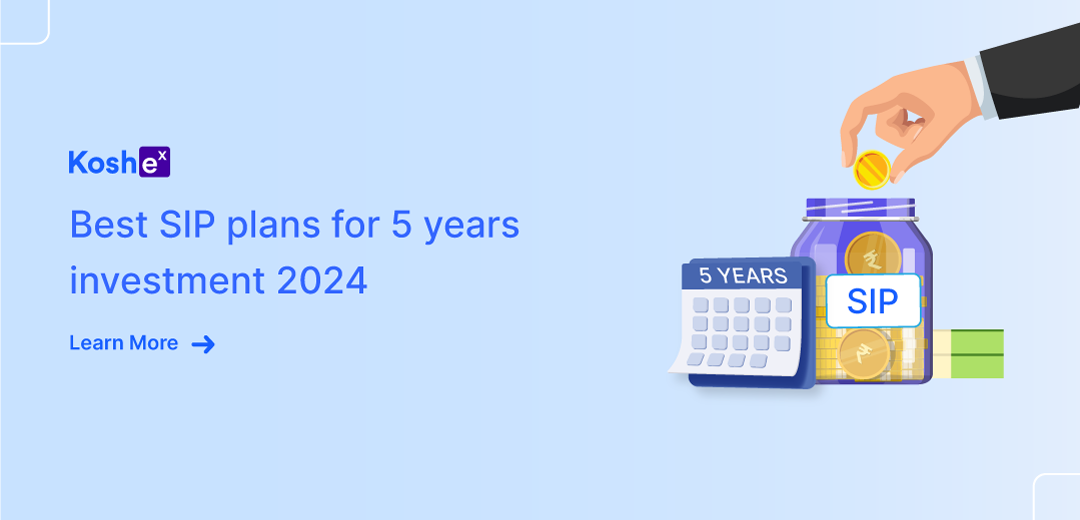Mutual funds are one of the only instruments that provide lucrative returns and tax benefits. The introduction of the equity-linked savings scheme (ELSS) mutual fund as a mode of deduction under the Income Tax Act of 1961, was a huge relief to taxpayers.
Finally, they got the much-needed boost for investing in a good investment avenue as well as benefit in terms of tax savings. But should we opt for mutual funds to save tax?
Well, certainly, yes. Let’s see why! But before that, let’s look at the income tax provision that allows these deductions. Also, we will explore how Koshex can open the doors of tax savings through 5000+ funds.
Section 80C – Save tax by investing in ELSS mutual funds
Section 80C of the Income Tax Act, 1961, allows taxpayers to claim deductions through tax-saving investments. One of the prominent ways to claim the deduction is through investment in equity-linked savings scheme (ELSS) mutual funds.
The deduction amount that can be claimed during a financial year is up to Rs 1.5 lakhs. We can also use various other Section 80C investment options to claim tax benefits.
Why Should We Use Mutual Funds To Save Taxes?
What makes mutual funds stand out from other investment avenues? Well, it’s a no-brainer that mutual funds offer some of the highest returns compared to other asset classes.
So here are the top reasons why we should use mutual funds to save taxes:
1. Reduced lock-in period
One of the peculiar features of Section 80C is that most of the Section 80C investment avenues come with a lock-in period.
If we sell or redeem our investments before the lock-in period expires, we will have to reverse our tax benefit. This will increase our tax liability. Mutual funds are the only avenues with a minimum lock-in period.
The lock-in period in the case of the ELSS scheme is just three years. That means we can sell our mutual fund units once the three years expire.
If we go on to compare ELSS with other investment avenues under Section 80C, then the following is the lock-in period for them:
- Public Provident Fund (PPF) comes with a lock-in period of 15 years
- National Savings Certificate comes with a lock-in period of five years
- Tax-saver term deposits come with a lock-in period of five years
- Unit-linked insurance plans come with a lock-in period of five years
2. Flexible Investment Horizon
There is no fixed time for which we shall stay invested in mutual funds. Most ELSS mutual fund schemes are open-ended, so we can stay invested for as long as we wish. While there is a minimum tenure of investment (three years), it is only for the tax deduction.
We can still opt to exit investment before the expiry of three years but we will be required to reverse our tax deduction. Further, there is no maximum time limit before which we should exit.
3. Higher returns
Mutual funds are one of the highest return-generating instruments. Further, as Section 80C provides a deduction for investment under ELSS plans, this further increases the returns.
This is because the amount invested in ELSS plans is further invested in equity securities, one of the highest return-generating securities.
If we hold our mutual fund investments long enough, we can witness the magic of compounding when our investments start growing exponentially.
4. Multiple Investment Modes
ELSS plans come with two different modes of investment options. One can invest in ELSS through SIP as well as the lumpsum mode. Under the systematic investment plan (SIP), a pre-determined amount is invested each month in the ELSS plan.
Another method is a lumpsum investment, wherein a fixed amount is invested at once. Both of the above options are allowed for tax deduction under Section 80C.
We can also go for both modes simultaneously. We can start an SIP of a specific amount, and whenever we get the opportunity (maybe near the end of the financial year), we can make a lump sum investment.
5. Various schemes
Another significant benefit of investing in a mutual fund is a wide array of choices. We have an ocean of schemes to select from.
Thus, there are no limits on the number of investment options available. One can invest in any scheme or even multiple schemes and claim a tax deduction for the same. However, the fund must be either an ELSS or a tax-saving mutual fund.
It is important to compare various schemes in terms of returns, expense ratio, and underlying assets and then select one or more that aligns with the investment goals.
6. Highly regulated
Mutual funds are highly regulated. The Securities and Exchange Board of India (SEBI) regulates the entire mutual fund environment.
This ensures that there is complete transparency for the investors. Thus, this makes mutual fund investments a safe and secure option.
In a nutshell
As we can see, mutual funds can outperform other instruments under Section 80C. This makes it one of the most preferred investment options to save taxes.
This is especially beneficial when we fall under the 30% taxation slab. In such cases, the mutual fund provides returns of 10%-12% per annum and saves tax @30% per annum.
If you want to invest in an ELSS mutual fund to inculcate such huge tax savings, then we at Koshex can help you achieve your objective.
Koshex allows investments across 5000+ funds. Further, one can automate investments easily; thus, it helps investors adopt a disciplined mode of investing. When are you stepping toward your tax-saving journey?
Frequently asked questions
Q: Is investment in equity shares also eligible for tax deductions like equity-linked savings schemes (ELSS)?
A: No. Only the ELSS scheme has been prescribed under the Income Tax Act of 1961, to be eligible for a tax deduction. Therefore, investments in equity shares are not eligible for deduction under Income Tax Act.
Q: Suppose I am earning Rs 15 lakhs per annum. What is the maximum amount of deduction that I can claim under income tax? What will be my tax savings?
A: If you are earning Rs 15 lakhs per annum, you can invest in the ELSS scheme and claim a deduction of up to Rs 1.5 lakhs for each financial year. Here is a comparison of your tax liability before and after investment:
| Particulars | Before Investing in ELSS | After Investing in ELSS |
| Total Earnings (Before Deduction) | Rs 15 lakhs | Rs 15 lakhs |
| Tax Deduction Under Section 80C | – | Rs 1.5 lakhs |
| Total Income After Deduction | Rs 15 lakhs | Rs 13.5 lakhs |
| Tax Liability | Rs. 2,62,500Rs. 2,50,000 * 0% = 0Rs. 2,50,000 * 5% = 12,500Rs. 5,00,000 * 20% = 1,00,000Rs. 5,00,000 * 30% = 1,50,000 | Rs. 2,17,500Rs. 2,50,000 * 0% = 0Rs. 2,50,000 * 5% = 12,500Rs. 5,00,000 * 20% = 1,00,000Rs. 3,50,000 * 30% = 1,05,000 |
Thus, by investing in ELSS, you can save tax of Rs. 45,000 (Rs. 2,62,500 – Rs. 2,17,500).
Q: Is deduction for investment in the ELSS scheme also allowed under the new taxation regime?
A: No. The new taxation scheme disallows most of the deductions under the Income Tax Act. Thus, investment in the ELSS mutual fund scheme is not eligible for deduction under the new taxation regime.









Leave a Comment